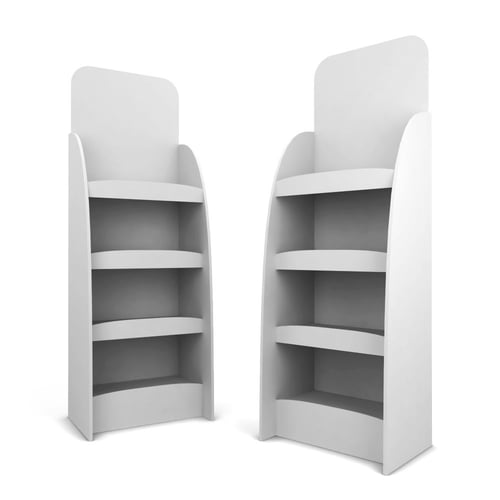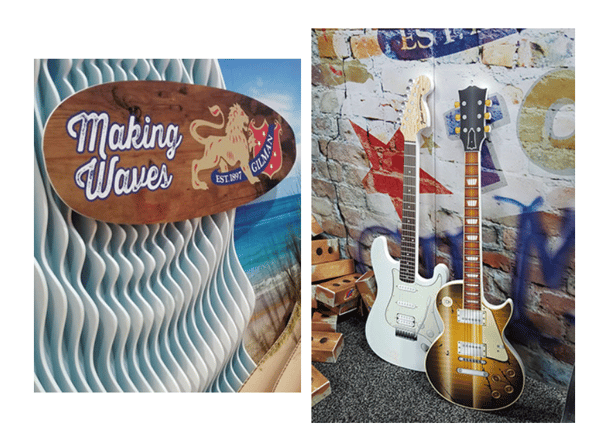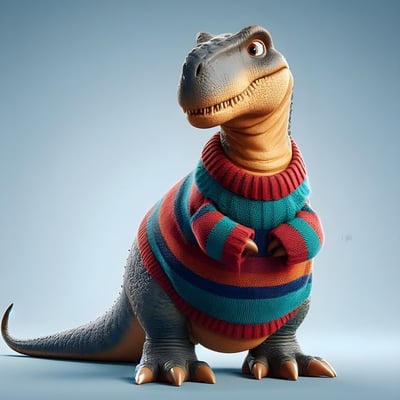
3 Best Practices (and 1 Pitfall) in 3D Displays
Imagine rounding the corner at your local grocery store and bumping into a six-foot-tall, purple Tyrannosaurus Rex with a bright green tummy, holding out a cookie sheet filled with breakfast bars. Hard to miss, right?
While the popularity of Barney the Purple Dinosaur may have passed, the point remains. Because we can’t not see them, not notice them, not interact with them – which is precisely why these larger-than-life displays stand to work and work well – the pitfall to avoid when considering 3D displays is to not consider them for your company and your customers.
From boosting point-of-purchase sales in retail spaces to ensuring brands stand out at trade shows and expos, statistics on 3D displays, much like the finished displays themselves, stand out:
- 3D displays in retail environments have been found to increase sales by an average of 35%, according to a study conducted by Nielsen.
- 3D displays can increase customer retention and impulse purchases by up to 29%, according to research conducted by Point of Purchase Advertising International.
- 72% of consumers are more likely to make a purchase after engaging with a product through a 3D display, according to a survey conducted by Statista.
- 3D displays can significantly increase product visibility and attention, leading to a 44% increase in sales, according to a study published in the Journal of Retailing and Consumer Services.
- According to a report by Grand View Research, the global market for 3D displays is expected to reach a staggering value of $227.3 billion by 2025, indicating a strong demand and potential for increased sales.

Because we can’t not see them, and now that you are considering 3D displays for your company and your customers, what are best practices in this massive market? Business Development Manager of The Gilman Brothers Company, a North American manufacturer of foamboard products for signage, display, and graphics, Ari Luna says, “The goal is that the display is functional, while also stand-out and unique, and that it tells the brand story in a way that is attractive to the demographic.”

Putting your business on display, captivating attention, and building brand awareness while simultaneously highlighting specific products, creating a sensational experience for new and loyal customers, and effectively increasing point-of-purchase sales, 3D displays hold great opportunity – if they can hold up to the challenges. Read on to discover best practices to follow when entering the 3D display market.
Best Practices: Material
Akin to the chicken and the egg, or possibly to peanut butter and jelly, the design of any 3D display and the material it's made from go hand-in-hand. Alongside bold colors, layered imagery, and carefully selected fonts that create the look, or graphic design, of a 3D display, the mechanical design must also be taken into account – which must also take into account the materials the display will be made of (which will also affect the graphic design of the display). The design of any 3D display and the material it's made from must go hand-in-hand.
“Will it be strong enough to hold the weight of the product?” Luna explains. “Can it fit into a small corner, but still stand out, and also hold up to a stress test? There are many variables and details that need to be considered when developing and building 3D displays.”
Luna says best practices in 3D displays include carefully selecting materials that will best accommodate the specs of the project. Luna says Infinity foam board is highly applicable for many 3D displays. “With Infinity [foam board], creativity is no longer limited to substrates commercial printers are used to using.” Known for its cold-bending capability, Infinity is considered a green product as it includes recycled content and a recycling program. The foam board can create the illusion of wood or metal, for example, and at a fraction of the cost and weight of other materials.

Best Practices: Challenges
Whether the display will be seen for six months at a small gas station or six days at a huge holiday expo – a small end cap indoors at a local grocery store or a huge installation outside of a large shopping mall – best practices in 3D displays include carefully assessing the environmental challenges of each display.
.jpg?width=600&height=480&name=pexels-ip-creative-16059552%20(1).jpg)
Luna says it’s important to pay attention to what is needed of the particular display to meet the demand at hand. “Will the display be used short-term at a trade show, or does the display need durability and long-term capabilities? Will the display need to be maintained?” Luna explains.
Luna advises paying attention to the installation of the 3D display when assessing its environment. “Will this display be professionally installed by a team of professionals, or will this be assembled by workers at the retail store?” Finally, in terms of environmental challenges, Luna says it’s important to understand clearly how people interact with the display. “Will they look at it, touch it, pick up products? Can the display be wiped down, does it need to have this option?”
Best Practices: Partner
Remember the six-foot-tall, purple Tyrannosaurus Rex at the beginning of this article with a bright green tummy, holding out a cookie sheet filled with breakfast bars—the display that was hard to miss?
Now imagine it slumped over.
Oops, wrong material selection, and (even bigger) oops, that’s hardly the brand story any successful business wants to tell. “I absolutely believe that there is a need for 3D displays for the graphics and tradeshow industry, for retailers, for commercial printers, for any business looking to gain attention and boost sales, yes,” Luna says. “I also believe that there is a need to develop a relationship with the right print partner, the right fabricator, to achieve your best results.”
When talking with your potential partner about creating 3D displays for your brand and your customers, what questions should be top of mind? Materials, environmental challenges, this article is filled with precisely the questions you’ll need answered now that you are considering 3D displays for your company and your customers – because we can’t not see them.

By: Jen W. O’Deay
To talk further with Millcraft about engaging 3D displays for your business, Just ask.